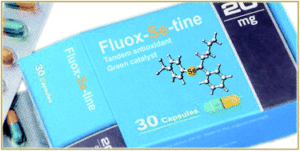We are very pleased to introduce Laura Orian, the corresponding author of the paper ‘Fluoxetine scaffold to design tandem molecular antioxidants and green catalysts‘. Her article has been very well received and handpicked by our reviewers and handling editors as one of our May HOT articles. Laura was kind enough to tell us more about the work that went into this article and what she hopes to achieve in the future. You can find out more about the author and their article below and find more HOT articles in our online collection.
Meet the Author
 Laura Orian graduated cum laude and got her PhD in Chemical Sciences at the University of Padova in the Theoretical Chemistry group. She is currently Associate Professor of Physical Chemistry in Padova. Her research interest aims at elucidating central physical phenomena in chemistry rooted in the properties of atoms, molecules, and materials. A deep rationalization and interpretation of experimental evidence is pursued through improvement of the fundamental description of chemical systems (chemical theory), and the applications of new and existing techniques to chemical, physical and biological problems (chemical computation), with particular attention to health and sustainability. The ultimate goal of her research is to predict the chemical properties of a chemical system in advance of the experiment, for a rational design of functional molecules and materials assisted by computer.
Laura Orian graduated cum laude and got her PhD in Chemical Sciences at the University of Padova in the Theoretical Chemistry group. She is currently Associate Professor of Physical Chemistry in Padova. Her research interest aims at elucidating central physical phenomena in chemistry rooted in the properties of atoms, molecules, and materials. A deep rationalization and interpretation of experimental evidence is pursued through improvement of the fundamental description of chemical systems (chemical theory), and the applications of new and existing techniques to chemical, physical and biological problems (chemical computation), with particular attention to health and sustainability. The ultimate goal of her research is to predict the chemical properties of a chemical system in advance of the experiment, for a rational design of functional molecules and materials assisted by computer.
The research team
Giovanni Ribaudo, Marco Bortoli, Alberto Ongaro, Erika Oselladore, Alessandra Gianoncelli and Giuseppe Zagotto
Our collaborative research aims at designing novel multi-functional antioxidant bioactive molecules, structurally inspired to known drugs and investigate their mechanism of action. The rationale behind this study relies on the growing pieces of evidence suggesting the involvement of oxidative stress in central nervous system (CNS) diseases. Particularly, our purpose was to modify an existing psychotropic drug in order to enhance its antioxidant potential with positive impact on the medical treatment.
In this paper, we describe the synthesis of some fluoxetine analogues incorporating a selenium nucleus. Selenium is the key oligoelement present in the enzymes involved in the antioxidant endogenous defense system. We have chosen fluoxetine because it is a very important antidepressant, better known with its commercial name ‘Prozac’. The mechanistic details of the enhanced antioxidant potential of our designed compounds were unraveled combining nuclear magnetic resonance (NMR), electrospray ionization-mass spectrometry (ESI-MS), and quantum chemistry calculations.
Our collaborative team is composed of researchers with different backgrounds, and the investigation that laid the basis for this paper was carried out combining theoretical, synthetic, and analytical skills. As far as we are concerned, this research work represents an outstanding example of multidisciplinarity, which is itself an intriguing and challenging task.
Fluoxetine scaffold to design tandem molecular antioxidants and green catalysts
Giovanni Ribaudo, Marco Bortoli, Alberto Ongaro, Erika Oselladore, Alessandra Gianoncelli, Giuseppe Zagotto and Laura Orian
RSC Adv., 2020,10, 18583-18593
DOI: 10.1039/D0RA03509B, Paper
 Submit to RSC Advances today! Check out our author guidelines for information on our article types or find out more about the advantages of publishing in a Royal Society of Chemistry journal.
Submit to RSC Advances today! Check out our author guidelines for information on our article types or find out more about the advantages of publishing in a Royal Society of Chemistry journal.
Keep up to date with our latest HOT articles, Reviews, Collections & more by following us on Twitter. You can also keep informed by signing up to our E-Alerts.












